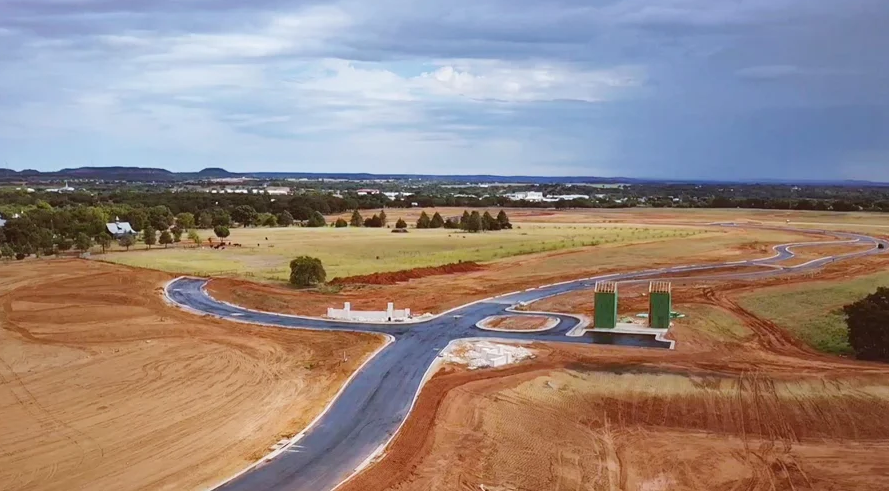Sustainable land development focuses on balancing environmental, economic, and social needs. Key strategies include conserving natural resources, integrating renewable energy, and promoting compact urban growth. Emphasis is placed on using eco-friendly materials, preserving biodiversity, and reducing waste through recycling and reuse. Stakeholder collaboration, regulatory compliance, and community engagement ensure equitable outcomes. Planning prioritizes efficient land use, minimizing environmental impact while supporting long-term resilience and sustainable livelihoods. Holistic approaches drive sustainable and responsible development practices.
Introduction to Sustainable Land Development
Sustainable land development is a forward-thinking approach that ensures present development does not hinder future needs. It carefully balances environmental care, economic feasibility, and social equity, crafting sustainable spaces over the long haul. As urban areas expand, the role of sustainability in managing resources becomes increasingly crucial. Cities must evolve with a commitment to ecological integrity, economic health, and social vitality. Engaging general contractors near me who prioritize these values can lead to projects that blend seamlessly with their natural surroundings while meeting the needs of growing communities.
Sustainable land development is not just an environmental ideal; it’s a practical necessity, addressing climate risks, resource constraints, and future generations’ well-being. Proper planning fosters urban resilience, adaptability, and vibrant communities.
Principles of Sustainability in Land Use
The principles of sustainable land use revolve around three interconnected pillars: environmental stewardship, economic growth, and social equity. First and foremost is ecological sustainability, where conservation efforts ensure that ecosystems remain robust and preserve biodiversity. Trash reduction, water conservation, and efficient energy use are the foundation of initiatives to reduce their adverse environmental effects.
Economic sustainability involves creating long-term value through reduced operational costs, higher property values, and increased marketability. Social sustainability involves all stakeholders in the development process, fostering community pride and acceptance of new developments and ensuring the project’s benefits are felt broadly.
Benefits of Sustainable Development Practices
Sustainable development practices offer significant environmental benefits, including lower energy consumption and carbon emissions. Green building practices improve the quality of life by promoting cleaner air and water through eco-friendly materials and increasing natural light. Economically, sustainability leads to lower costs over a project’s lifetime, with renewable technologies offset by reduced energy bills and maintenance costs. Sustainable properties command higher prices, reflecting a growing preference for eco-conscious living spaces. Socially, sustainable developments often include resources like parks and community centers, supporting health and community cohesion. Safe, accessible, and attractive public spaces enhance the living experience and community interaction.
Common Challenges and Solutions
While the benefits are clear, the path to sustainable land development has obstacles. Regulatory barriers can slow the approval processes for sustainable projects, and upfront costs can deter some developers. Additionally, there may be resistance from communities unfamiliar with the benefits of more sustainable alternatives.
Overcoming these challenges often requires strategic partnerships. For instance, forming collaborative efforts with governmental agencies can streamline the regulatory process, making it easier for sustainable projects to get off the ground. Policymakers can facilitate this by offering incentives such as tax breaks or subsidies for projects that meet specific sustainability criteria.
Role of Technology in Sustainable Land Development
In sustainable land development, technology is both a tool and a catalyst. Geographic Information Systems (GIS) provide detailed insights into land features, helping planners and developers make informed land-use decisions that minimize environmental impact. This data is crucial for assessing risks and opportunities in development.
Innovative technologies in buildings, such as advanced HVAC systems, automated lighting, and water-saving fixtures, drastically reduce resource consumption and waste. These innovations reduce operating costs and contribute to the comfort and health of occupants.
Case Studies: Success Stories in Sustainability
Successful sustainable development projects set benchmarks for future developments, demonstrating what’s possible with commitment and innovation. Initiatives such as eco-districts incorporating renewable energy sources illustrate the possibility of producing more energy than they use, offering examples of reaching net-zero carbon targets.
By studying these examples, developers can extract lessons that apply to their projects, such as the importance of community engagement and leveraging technology for efficiency. These factors and a clear vision and purpose are the key ingredients to success.
Future Trends in Sustainable Land Development
The future beckons exciting shifts toward sustainable land development practices. Increasing regulations related to climate change initiatives are encouraging developers to incorporate green-building certifications in projects worldwide.
Technological advancements will undoubtedly drive further change. Innovations in renewable energy, materials science, and sustainable urban design will make it easier and more cost-effective to adopt sustainable practices widely. These trends point optimistically towards a future where sustainable development is the norm rather than the exception.
Conclusion: The Path Forward
To sum up, sustainable land development is imperative for healthy, resilient, and equitable communities. Embracing environmental, economic, and social sustainability ensures that development benefits current and future generations. The industry can pave a clear path toward a promising, sustainable future by leveraging modern technology, fostering community partnerships, and learning from successful precedents. The ongoing commitment to responsible development promises better results for the planet and our everyday lives.

